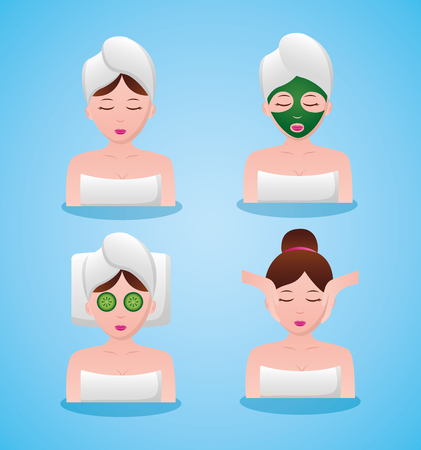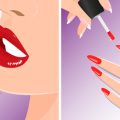1. Overwashing Fine Hair
Many people with fine hair think they need to wash it every single day to keep it from looking greasy. While its true that fine hair can get oily faster, overwashing actually makes the problem worse. When you wash your hair too often, youre stripping away natural oils that your scalp produces to keep your hair healthy. In response, your scalp may start producing even more oil to make up for it—leaving your hair feeling greasy all over again.
So, what’s the fix? Instead of shampooing daily, try using a gentle dry shampoo on non-wash days. This helps absorb oil without stripping your hair. Also, make sure youre using a volumizing shampoo made for fine hair. These formulas are usually lighter and won’t weigh your strands down.
Quick Tips to Manage Fine Hair Without Overwashing
| Do | Dont |
|---|---|
| Use dry shampoo between washes | Wash your hair every day |
| Choose a lightweight, volumizing shampoo | Use heavy or moisturizing shampoos |
| Rinse with cool water to help close the cuticle and add shine | Overuse heat styling tools that can flatten fine hair |
Recommended Routine for Fine Hair:
- Day 1: Wash with volumizing shampoo and conditioner; air dry or blow-dry with a round brush for volume.
- Day 2: Use dry shampoo at the roots; style as needed.
- Day 3: Consider a low ponytail or bun to manage oil; apply more dry shampoo if necessary.
By adjusting your routine and choosing the right products, you’ll keep your fine hair looking fresh and full without overwashing.
2. Using Heavy Products on Curly Hair
Curly hair loves moisture, but not all products are created equal. One of the most common mistakes people with curly hair make is using thick, heavy creams or silicone-packed products. These can weigh curls down, lead to buildup on the scalp, and make your hair look flat instead of bouncy.
Why Heavy Products Are a Problem
Thick formulas often contain silicones and oils that coat the hair shaft rather than penetrate it. While they might give an instant shine or smoothness, over time they can create layers of residue that block moisture from getting in. This leaves curls dry underneath and greasy on the surface.
What You Should Use Instead
The key is to go for lightweight, water-based products that hydrate and define without the weight. Look for ingredients like aloe vera, glycerin, and flaxseed extract in your leave-in conditioners or styling gels.
Best Product Types for Curly Hair
| Product Type | What to Look For | Avoid |
|---|---|---|
| Leave-in Conditioner | Water-based, lightweight, humectants like glycerin | Silicones, mineral oil |
| Curl Cream | Light texture, moisturizing ingredients like shea butter or aloe vera | Heavy waxes or petrolatum |
| Styling Gel | Alcohol-free, defining without crunchiness | Drying alcohols, synthetic fragrances |
Layer Based on Hair Porosity
Your curl routine should also consider your hair’s porosity—how well your hair absorbs moisture. High-porosity hair may need richer leave-ins followed by sealing oils, while low-porosity curls benefit from lighter formulas that won’t just sit on top of the strand.
| Porosity Type | Recommended Routine |
|---|---|
| Low Porosity | Use light, water-based leave-ins and avoid too much protein or oil buildup. |
| High Porosity | Layer in moisture with leave-ins and seal with natural oils to lock hydration in. |
The goal is to let your curls breathe while giving them the hydration they crave. Switching to lighter products that match your curl pattern and porosity can make all the difference in achieving soft, defined curls without the weight.

3. Skipping Heat Protection on All Hair Types
It doesn’t matter if your hair is curly, straight, wavy, fine, or thick—if you’re using heat tools like flat irons, curling wands, or blow dryers without any protection, you’re setting your strands up for serious damage. Think of heat protectant like sunscreen for your hair: it’s a must-have.
Many people assume that only certain hair types need heat protection, but the truth is every hair type can suffer from dryness, breakage, and frizz when exposed to high temperatures without a barrier. Whether youre doing a quick touch-up with a curling iron or blowing out your hair for volume, skipping this step can lead to long-term damage.
Why Heat Protectant Matters
Heat protectants are designed to create a shield between your hair and styling tools. They help lock in moisture, reduce friction, and prevent uneven texture caused by overheating. Here’s what happens when you use—or skip—heat protection:
| With Heat Protectant | Without Heat Protectant |
|---|---|
| Smoother finish | Frizzy and rough texture |
| Less breakage and split ends | Increased hair damage over time |
| Moisture retention | Dryness and brittleness |
| Longer-lasting style | Uneven or inconsistent styling results |
How to Fix It
The fix is simple: always apply a heat protectant before styling with any hot tool. You can choose from sprays, creams, or serums depending on your preference and hair type. Here’s a quick guide:
Heat Protectant Options by Hair Type:
| Hair Type | Best Product Type | Why It Works |
|---|---|---|
| Fine or thin hair | Lightweight spray | Adds protection without weighing hair down |
| Thick or coarse hair | Cream or serum | Provides deeper moisture and better heat resistance |
| Curls and waves | Moisturizing spray or cream with curl protection | Keeps curls defined while preventing heat damage |
| Straight hair | Smoothing serum or mist | Helps maintain sleekness and shine during styling |
No matter your routine, never skip this crucial step. Your future self—and your healthy hair—will thank you.
4. Neglecting Scalp Care for Coily and Natural Hair
People with coily or natural hair often put a lot of effort into keeping their strands moisturized, which is great—but the scalp sometimes gets overlooked. A healthy scalp is essential for strong, thriving hair. If the scalp is dry, clogged, or irritated, it can lead to issues like dandruff, itchiness, and even slow hair growth.
Why Scalp Care Matters
Your scalp is skin, and just like the skin on your face or body, it needs regular care. When you have coily or natural hair, its easy for product buildup from oils, creams, and gels to collect on the scalp. This can block hair follicles and reduce oxygen flow, making it harder for new hair to grow.
Signs Your Scalp Needs Attention
| Sign | What It Means |
|---|---|
| Itching or flaking | Dryness or buildup that needs cleansing |
| Tight feeling after washing | Scalp may be stripped of natural oils |
| Slow hair growth | Poor scalp health could be affecting follicles |
| Redness or tenderness | Possible irritation or inflammation |
How to Fix It
Start by using a gentle cleansing treatment every couple of weeks to remove buildup without stripping natural oils. Look for products labeled as “scalp detox” or “clarifying,” but make sure they’re sulfate-free to avoid drying out your curls.
Try These Scalp-Friendly Ingredients:
- Jojoba Oil: Mimics the scalp’s natural sebum and helps balance oil production.
- Tea Tree Oil: Has antimicrobial properties that can soothe irritation and reduce flakes.
- Aloe Vera: Calms inflammation and hydrates both the scalp and strands.
Scalp Massage Tips:
A weekly scalp massage with your fingertips or a silicone brush boosts blood circulation, which supports healthy growth. You can add a few drops of jojoba or tea tree oil to help nourish the scalp while you massage.
The key takeaway? Don’t stop at moisturizing your hair—show your scalp some love too! It’s the foundation for healthy curls.
5. Choosing the Wrong Brush for Thick or Textured Hair
If you have thick or textured hair, using the wrong brush can seriously mess with your hair health. A lot of people make the mistake of using a fine-tooth comb or a regular brush that’s not made for their hair type. This can lead to breakage, frizz, and even pain while brushing.
Thicker and textured hair types need tools that can handle volume and curls without pulling or snapping strands. The key is to detangle gently and only when your hair is in the right condition—literally.
What Happens When You Use the Wrong Tool?
| Wrong Tool | Common Problems |
|---|---|
| Fine-tooth comb | Breakage, excessive pulling, pain |
| Nylon bristle brush | Frizz, static, uneven tension on hair |
What You Should Use Instead
The best time to detangle thick or textured hair is while it’s wet and coated with conditioner. This gives slip, making knots easier to work through without damage. Look for wide-tooth combs or brushes specifically designed for detangling textured hair.
| Recommended Tool | Why It Works |
|---|---|
| Wide-tooth comb | Glides through thick sections without snapping strands |
| Detangling brush (flexible bristles) | Designed to reduce breakage and define natural texture |
Pro Tip:
Always start brushing from the ends and work your way up to avoid unnecessary pulling. And remember: patience pays off when it comes to textured or thick hair!


